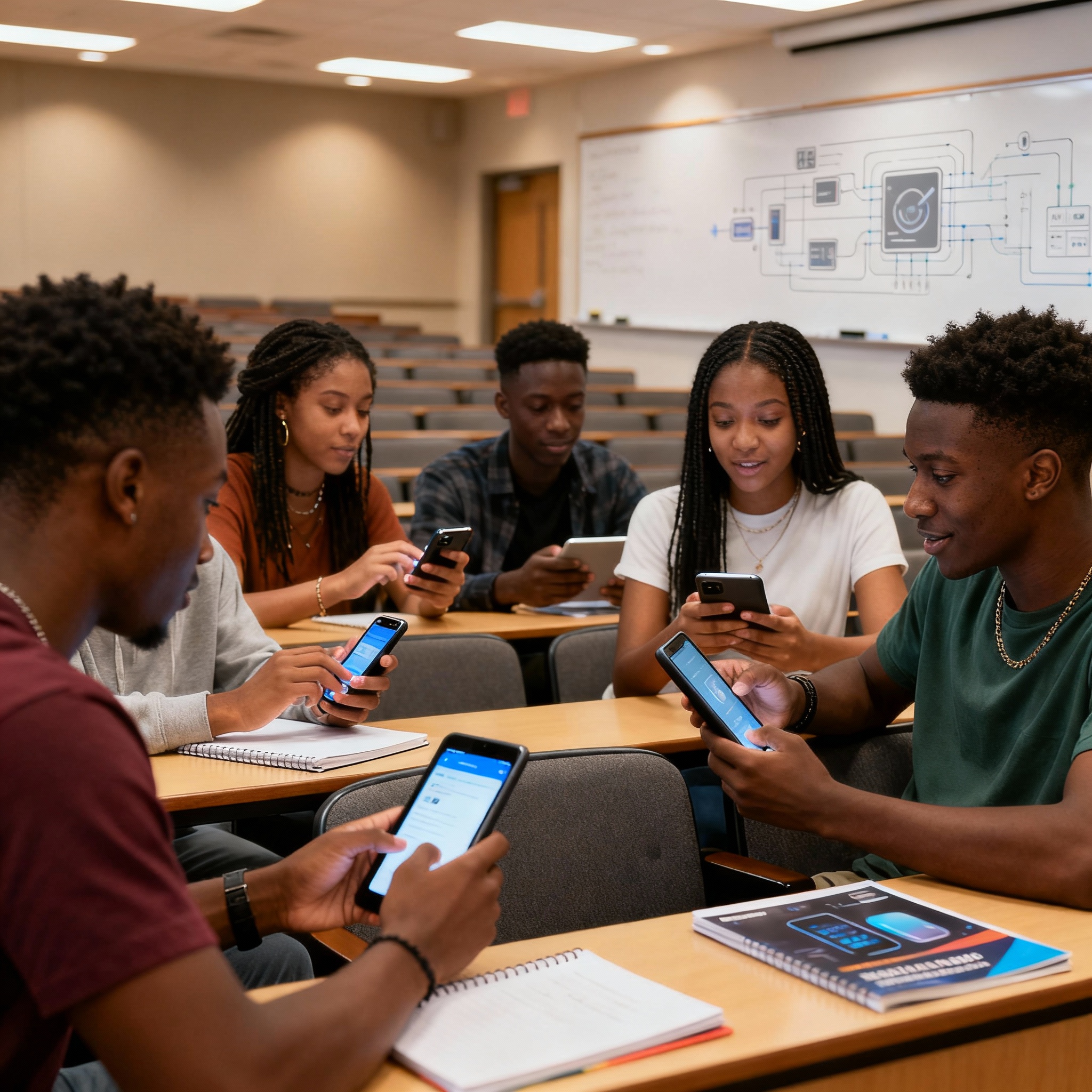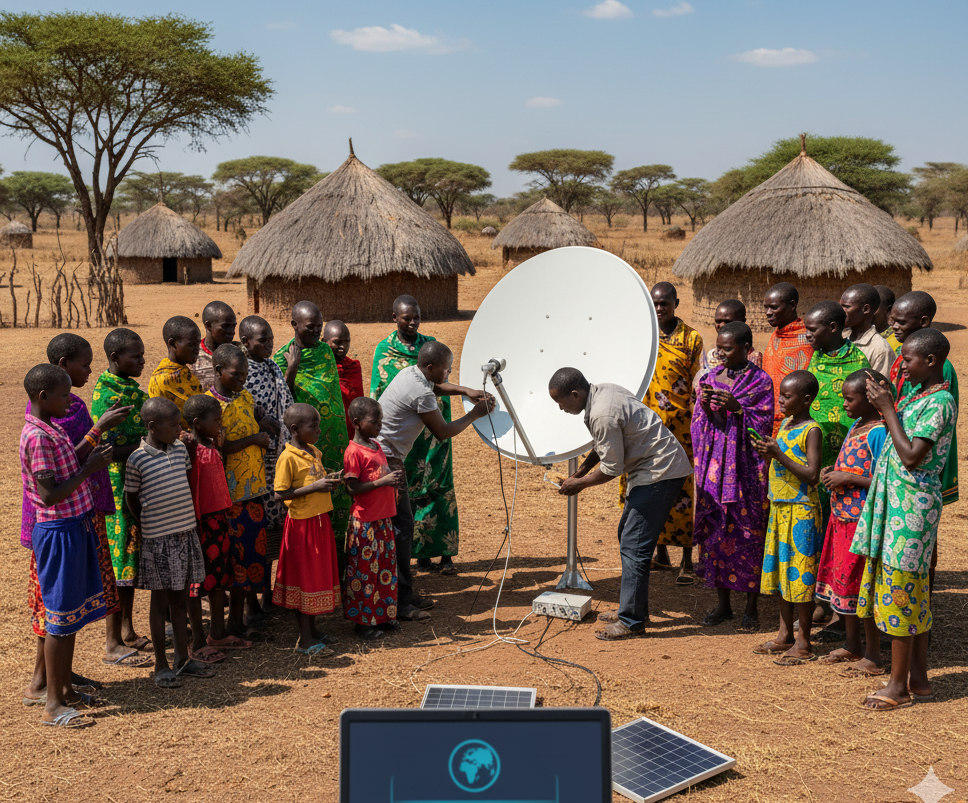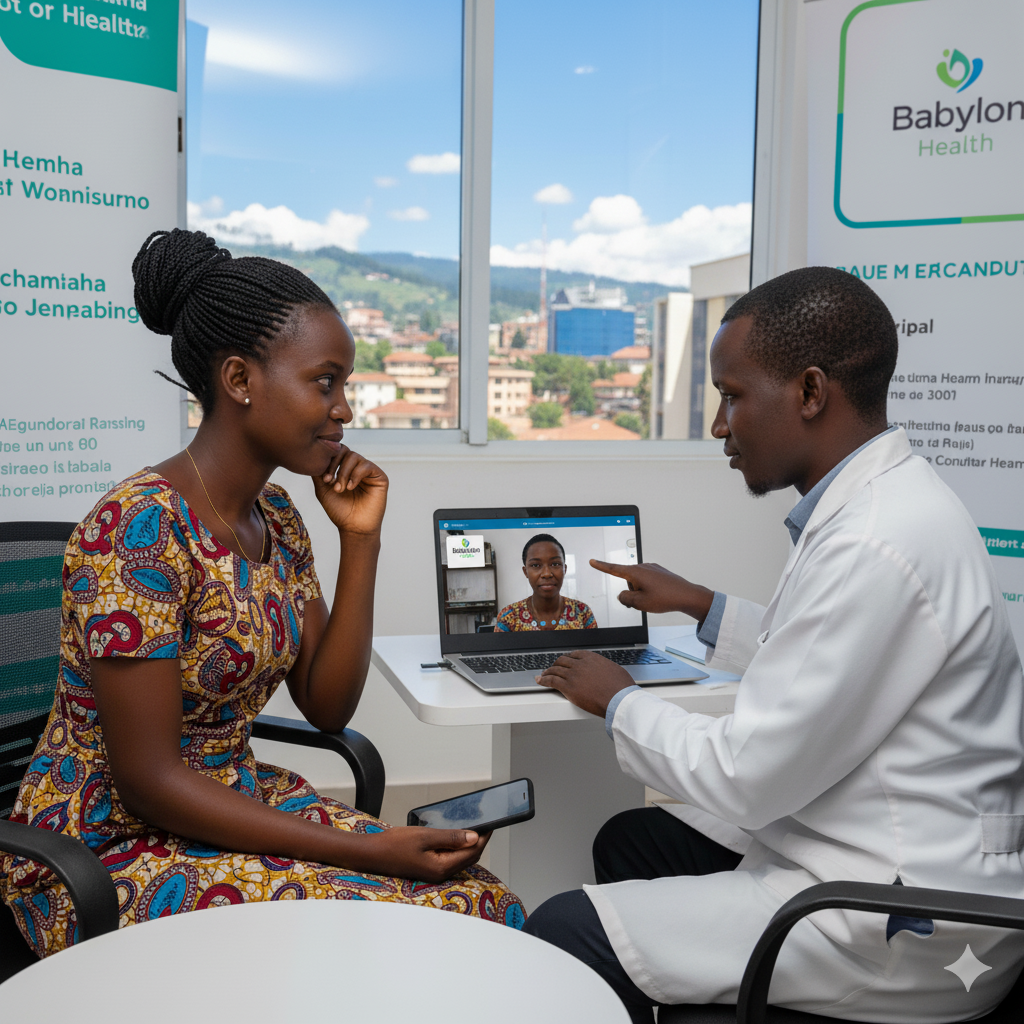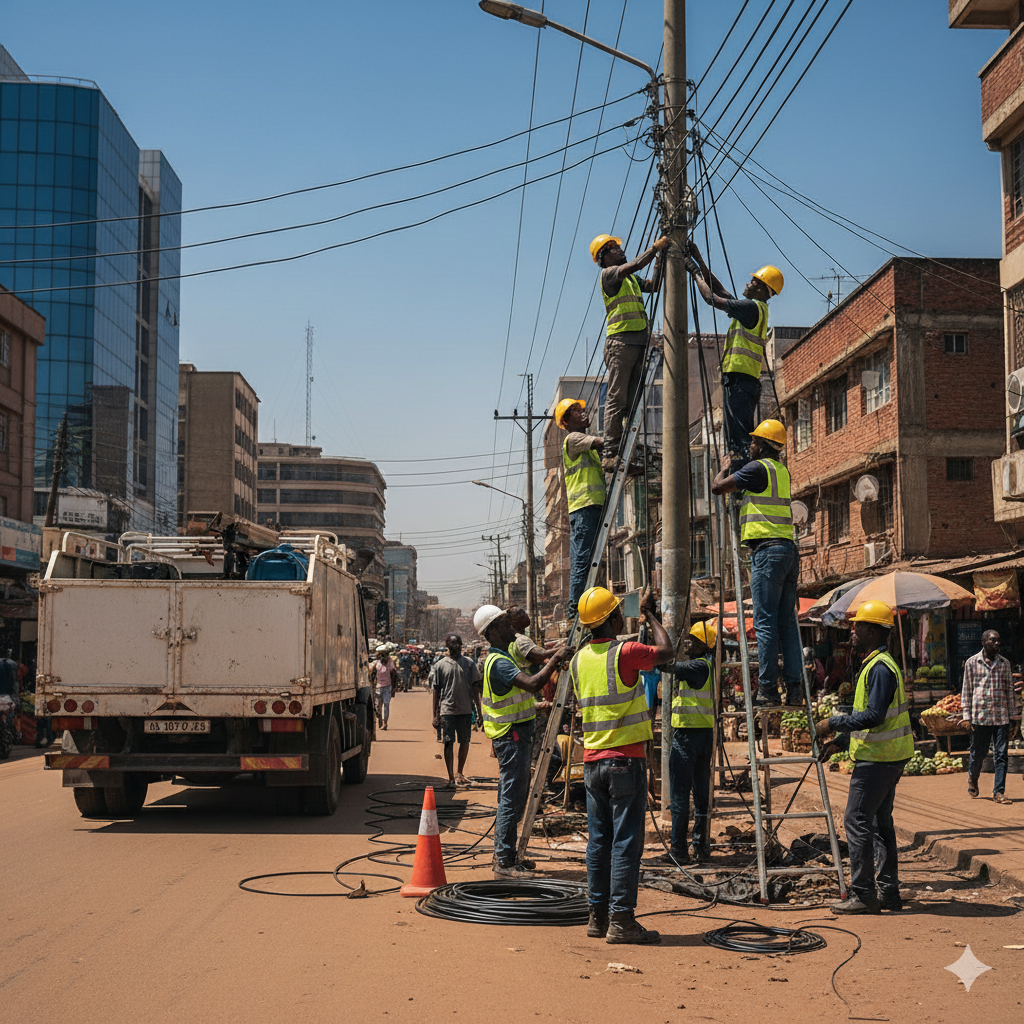Africa’s internet and telecommunication sector is growing. And I mean in this leapfrog, mobile-first way that’s honestly fascinating to watch. Across the continent, mobile technology has become the gateway to the internet, reshaping how people learn, trade, and communicate.
Internet penetration is now a clear measure of socioeconomic progress, and Africa’s surge in connectivity is impossible to ignore. With its youthful population, foreign investment in telecoms infrastructure, and growing innovation ecosystem, the continent is steadily closing the global digital divide.
How Fast Is Internet Growing in Africa?
The internet is growing faster in Africa than anywhere else in the world, even if the starting point was relatively low. Between 2019 and 2024, Africa added over 160 million new internet users. That’s a 13% annual growth rate while the global average sits at just 6%.
Think about that for a second. The rest of the world’s saturated— and Africa’s just getting started. From 2% penetration in 2005 to nearly 50% in 2025. That’s one of the fastest digital transformations in modern history, and it’s positioning Africa as the next major frontier for digital services and startups. It’s attracting tech giants, telecom operators, and investors who see immense potential in a young, connected market.
Furthermore, the continent’s digital economy is projected to hit $180 billion by 2025 and potentially $712 billion by 2050.

Africa’s Internet Penetration in 2025
As of early 2025, Africa’s overall internet penetration stands at 50% of the population. This is definitely a dramatic rise from just 16% a decade ago. However, this impressive average hides sharp regional contrasts.
Regional Disparities and Leaders
North Africa’s crushing it. Egypt’s at 80%+ penetration, Libya, Morocco, and Tunisia are all in the 75-88% range. They’ve got established infrastructure and higher urbanization rates, which helps.
But Central Africa and some Eastern countries? Different story. They’re averaging 28-34%, held back by poor and expensive infrastructure investment, low digital literacy, and political instability in some regions. Countries like Burundi, South Sudan, and the Central African Republic are below 15%. It’s rough.
Then there’s Nigeria. 107 million users. The largest online population on the continent. That’s about 55% penetration in a country of 220 million people, which means Nigeria’s digital economy alone is valued at over $30 billion annually. You can’t ignore those numbers if you’re thinking about African markets.
Kenya’s the surprise story here — 88% penetration. They’ve earned that “Silicon Savannah” nickname through Safaricom’s M-Pesa and strong government support for tech. South Africa dominates the southern region at 72% with the most sophisticated telecom infrastructure on the continent.
Which African Countries Have the Highest Internet Penetration?
Smaller nations often lead the pack. Morocco’s at 88%. Seychelles leads all African nations at 82%. Mauritius is at 68% with robust submarine cable connections (proximity to major cables matters, turns out).
Among major economies with mature digital markets, South Africa maintains 72% penetration with extensive 4G coverage and emerging 5G networks. Egypt reaches 80%, serving over 82 million users through mobile and growing fixed broadband.
But Nigeria dominates in absolute numbers. When you’ve got 107 million users, you’ve got scale. That creates opportunities that percentage-based rankings miss entirely.
Mobile Broadband: Africa’s Main Growth Engine
Here’s where Africa did something smart — it skipped fixed-line broadband entirely. Why bother with cables when you can go straight to mobile?
Dominance of Mobile Connectivity
By 2025, mobile broadband makes up 72% of all mobile connections in Sub-Saharan Africa. Up from just 25% in 2015. That’s a massive shift in just ten years.
The economics make sense. A single mobile tower costs $150,000-$300,000 and can cover thousands of users across a 35-kilometer radius. Fiber? That’s $20,000-$80,000 per kilometer, plus you need trenching, permits, ongoing maintenance. For rural populations, mobile’s the only viable business model.
By 2024, Africa had over 900 million mobile connections. Smartphones now account for 65% of devices — a dramatic shift from 2015 when feature phones dominated at 80%. That transition happened fast. Maybe too fast for infrastructure to keep up in some places, but that’s another conversation.
Why Is Mobile Internet More Common Than Fixed Broadband in Africa?
It’s practical. It’s affordable. And it works across Africa’s varied geography without requiring massive infrastructure investments that might never see returns. Simple as that.
Key Drivers of Growth: Investment, Innovation, and Youth
Africa’s telecom boom runs on foreign investment, local innovation, and demographic energy. Likewise, the continent’s young and tech-savvy population creates a natural demand.
China’s Role in Telecommunications Investment
Let’s talk about the elephant in the room. Chinese firms — mainly Huawei and ZTE — have built approximately 70% of Africa’s 4G networks. They supply equipment for over 50 telecom operators across 40 African countries.
The financing comes from Chinese state-owned banks like the China Development Bank. And, projects like Nigeria’s National Broadband Network ($328 million) and Ethiopia’s nationwide 4G rollout ($1.6 billion) rely heavily on Chinese equipment and expertise.
Now, this is where opinions diverge. Geopolitical analysts see it as a vital investment that Western lenders avoided due to “perceived risks” (read: they didn’t want to take the chance). Others worry about digital sovereignty and security concerns.
The truth? It’s complicated. Countries like Kenya, South Africa, and Rwanda are now demanding technology transfer agreements, local manufacturing requirements, and greater involvement of domestic firms. Some nations are diversifying their vendor mix, adding European suppliers like Ericsson and Nokia alongside Chinese providers.
The relationship’s evolving. It’s not just “China builds, Africa uses” anymore. African governments are negotiating harder, demanding more. That’s probably healthy.
African Innovation and Digital Entrepreneurship
Here’s what will excite you: local innovation.
M-Pesa. Launched in Kenya in March 2007. Now processing over $314 billion in transactions annually across seven African countries, serving 51 million active users. It’s a homegrown solution that demonstrates how mobile connectivity can leapfrog traditional banking. Kenya has achieved 83% financial inclusion compared to just 26% with traditional bank accounts. Think about what this means for people who never had access to formal banking:
- Convenience and accessibility to formal financial services like savings, loans, payments, and transfers for millions across Kenya and Africa.
- Safety and Security of people’s money since it reduces the need to carry cash.
- Small business owners, farmers, learning institutions, and health facilities receive payments, manage inventories, access microloans, and build financial histories.
The rise of e-commerce, digital payments, and online education continues to integrate the internet into everyday life. Jumia, through its online marketplace, operates in 11 African countries. Moreover, Flutterwave and Paystack became fintech unicorns, collectively processing over $200 billion in payments and serving 900,000 businesses.
In education, platforms like uLesson (Nigeria), Eneza Education (Kenya), and Siyavula (South Africa) reach millions of students with mobile-first learning. The African tech startup ecosystem raised $4.6 billion in 2022 alone, with 1,000 active startups addressing everything from agritech and healthtech to logistics and renewable energy.
This innovation creates organic demand for connectivity. It’s a virtuous cycle — more connectivity enables more innovation, which drives demand for more connectivity.
Persistent Barriers: Affordability, Devices, and Skills
But let’s be real. Millions remain offline despite living within coverage areas. Experts call it the “usage gap.” I call it a massive problem.
The Affordability Challenge
For the poorest 20% of Sub-Saharan Africans, a basic smartphone costs 87% of their monthly income. That’s insurmountable.
Even middle-income folks pay 20-40% of monthly earnings for a smartphone. The UN Broadband Commission says it should be 2% or less. We’re not even close.
Data prices? In 2024, 1GB of mobile data cost an average of $3.30 in Sub-Saharan Africa. Compare that to $0.26 in Asia. For someone earning $2 per day (the median income in many African countries), buying 1GB consumes more than a full day’s wages.
That forces impossible trade-offs. Connectivity versus food. Connectivity versus healthcare. How do you choose?
Here’s the kicker: 84% of Sub-Saharan Africa’s population lives within mobile broadband coverage. But only 28% actually use mobile internet services. That’s the usage gap. The Alliance for Affordable Internet estimates that bringing data prices down to 2% affordability could connect an additional 160 million people.
Though you’ve built the infrastructure. People just can’t afford to use it.
Main Barriers to Greater Internet Access
- Expensive devices.
- Costly data plans.
- Limited digital literacy.
About 60% of mobile internet users still rely on older 3G phones, which restricts access to modern applications that need 4G speeds and processing power.
Digital literacy’s a critical bottleneck. An estimated 250 million Africans can’t read or write, making text-based internet interfaces inaccessible. Even among literate populations, only 35% possess basic digital skills like sending emails or using online payment systems.
Language barriers compound the problem. Most online content’s in English, French, or Portuguese. Hundreds of local languages lack digital representation. (Though honestly, AI translation might help solve this faster than we think.)
Infrastructure gaps persist beyond mobile coverage. Electricity access sits at just 48% in Sub-Saharan Africa. Millions must travel to charging stations or rely on expensive solar solutions. In rural areas, charging fees can exceed data costs. Let that sink in.
Gender disparities limit adoption too. Women are 37% less likely to use mobile internet than men due to lower incomes, reduced digital literacy, and cultural restrictions. That’s half the population we’re failing to connect.
Urban–Rural Divide and Gender Gaps
Digital inequality’s one of Africa’s most pressing issues. Internet access is heavily concentrated in cities while rural communities get left behind.
The Rural Connectivity Challenge
Urban centers enjoy 4G and even 5G speeds. Many rural regions remain stuck on 2G or have no access at all. Urban internet penetration averages 65%. Rural areas? 23%. In Ethiopia, Niger, and Chad, rural connectivity drops below 10%.
Building rural backhaul networks is expensive with limited commercial returns. A rural cell tower might serve 500-1,000 subscribers compared to 10,000+ in urban areas. Operational costs (power, maintenance, security) remain similar regardless. The average revenue per user in rural areas is $2-4 monthly compared to $8-12 in cities.

The business case doesn’t work without subsidies. Which is why we need government intervention.
Emerging solutions like Starlink launched in several African countries in 2023. But at $60+ monthly, it’s unaffordable for most Africans. It’s finding adoption among businesses, schools, and community centers. Not individuals.
Countries like Rwanda have successfully used Universal Service Fund financing to achieve 95% 4G population coverage by mandating operators invest in underserved areas as license conditions. That’s the kind of policy intervention that works.
The Rise of 5G and the Future of Connectivity
Africa’s next phase is being shaped by 5G rollout. As of mid-2025, 27 countries have launched 5G services, led by South Africa and Nigeria.
5G Adoption in Africa
Currently, only about 1.2% of Africans have 5G access, concentrated in major cities like Lagos, Nairobi, Johannesburg, and Cairo. But that’s expected to jump to 17% by 2030 — approximately 300 million connections.
South Africa leads with over 40% population coverage, having launched 5G in 2020. Nigeria, Kenya, and Egypt are rapidly expanding their networks.
5G will power smart cities, telemedicine, precision agriculture, and connected industries. In agriculture, 5G-enabled IoT sensors can optimize irrigation and detect crop diseases early, potentially increasing yields by 20-30%. In healthcare, remote surgery and real-time diagnostic support could extend specialist care to rural areas.
GSMA estimates 5G could contribute $26 billion to Sub-Saharan Africa’s GDP by 2030 and create 1 million new jobs. But realizing this requires coordinating device affordability, spectrum allocation, and use-case development alongside network rollout. You can’t just build networks and expect magic.
Future Connectivity Trends
Fixed Wireless Access (FWA) using 5G is gaining traction in the continent. Operators like MTN, Vodacom, and Rain offer 50-100 Mbps home internet packages in South Africa, Kenya, and Nigeria. This technology’s promising for peri-urban areas where fiber’s uneconomical, but 5G towers can serve hundreds of homes within a 1-2 kilometer radius.
On the other hand, governments are working to reduce spectrum costs. Kenya reduced its 5G spectrum fees by 50% in 2024 to encourage faster deployment. That’s a smart policy. High spectrum licensing fees have historically slowed deployment. For example, Nigeria’s 2021 5G auction raised $547 million, adding significantly to operator costs.
Likewise, local device assembly initiatives are emerging. Egypt, Ethiopia, and Rwanda have established mobile phone manufacturing facilities with tax incentives, producing millions of affordable 4G and 5G smartphones annually. And the African Continental Free Trade Area (AfCFTA) is expected to further reduce device costs by enabling tariff-free trade in telecommunications equipment.
At the moment, submarine cable investments continue accelerating. Fifteen new cables are under construction, which will quadruple Africa’s international bandwidth capacity by 2030. Bandwidth’s becoming less of a constraint. Though affordability and devices remain the bigger problems.
Socioeconomic Impact: How Connectivity Transforms Africa
Digital connectivity’s reshaping economies, education, and health systems. The World Bank estimates that a 10% increase in broadband penetration can boost GDP per capita by 1.38%. That’s not trivial.
Digital Entrepreneurship and Inclusion
The internet is unlocking possibilities that didn’t exist before. For instance, startups and small businesses are thriving online, e-learning platforms are teaching new skills, and mobile health services are connecting remote patients with doctors.
How is this practical?
Women entrepreneurs are particularly benefiting.
Studies show internet-enabled women in Africa are 30% more likely to start businesses than those without connectivity. Platforms like Jumia and Safaricom’s Masoko enable women to reach customers beyond their immediate communities. Mobile money’s given millions of women financial autonomy independent of male family members. That’s transformative in ways that go beyond economics.
Digital platforms are revolutionizing healthcare and learning delivery.

Telemedicine consultations like Babylon Health (Rwanda), mPharma (Ghana), and Helium Health (Nigeria) have grown 400% since 2020, with remote diagnosis reaching patients in areas with no resident doctors. In education, MOOCs and mobile learning platforms have enrolled over 5 million African learners, providing access to university-level content and professional certifications that were previously inaccessible.
The gig economy’s flourishing too. Platforms like Andela, Upwork, and Toptal connect African software developers, designers, and digital professionals with global clients. This creates dollar-denominated income opportunities that bypass traditional employment barriers. Some developers earn 5-10 times local salary levels by serving international markets.
Think about what that means. A talented developer in Lagos or Nairobi can compete globally without leaving home. That’s powerful.
Building a Connected and Inclusive Africa
Africa’s digital story is transformation and resilience. Mobile broadband allowed the continent to skip outdated infrastructure models and leap into a mobile-first future. Strategic investment — especially from China — built the backbone, but it’s African innovation and policy vision that’ll determine the next chapter.
The challenge? Closing the affordability and skills gap. We’ve built networks people can’t afford to use. We’ve created coverage without access. That’s the fundamental tension.
But here’s what gives me hope: the innovation’s African. M-Pesa didn’t come from Silicon Valley. Neither did Flutterwave or Jumia. Local entrepreneurs understand local problems in ways foreign companies never will.
The continent’s digital future is bright. With the right partnerships and local empowerment, it’ll shine even brighter. But we need to solve affordability. We need to bridge the rural-urban divide. We need to close the gender gap.
Infrastructure’s necessary but not sufficient. The real work’s just beginning.
